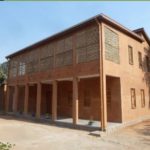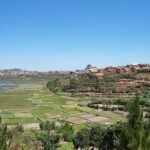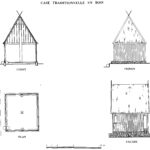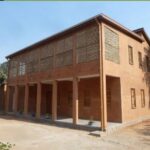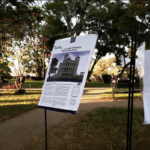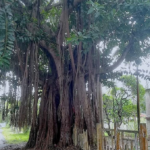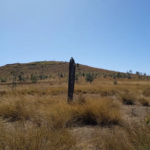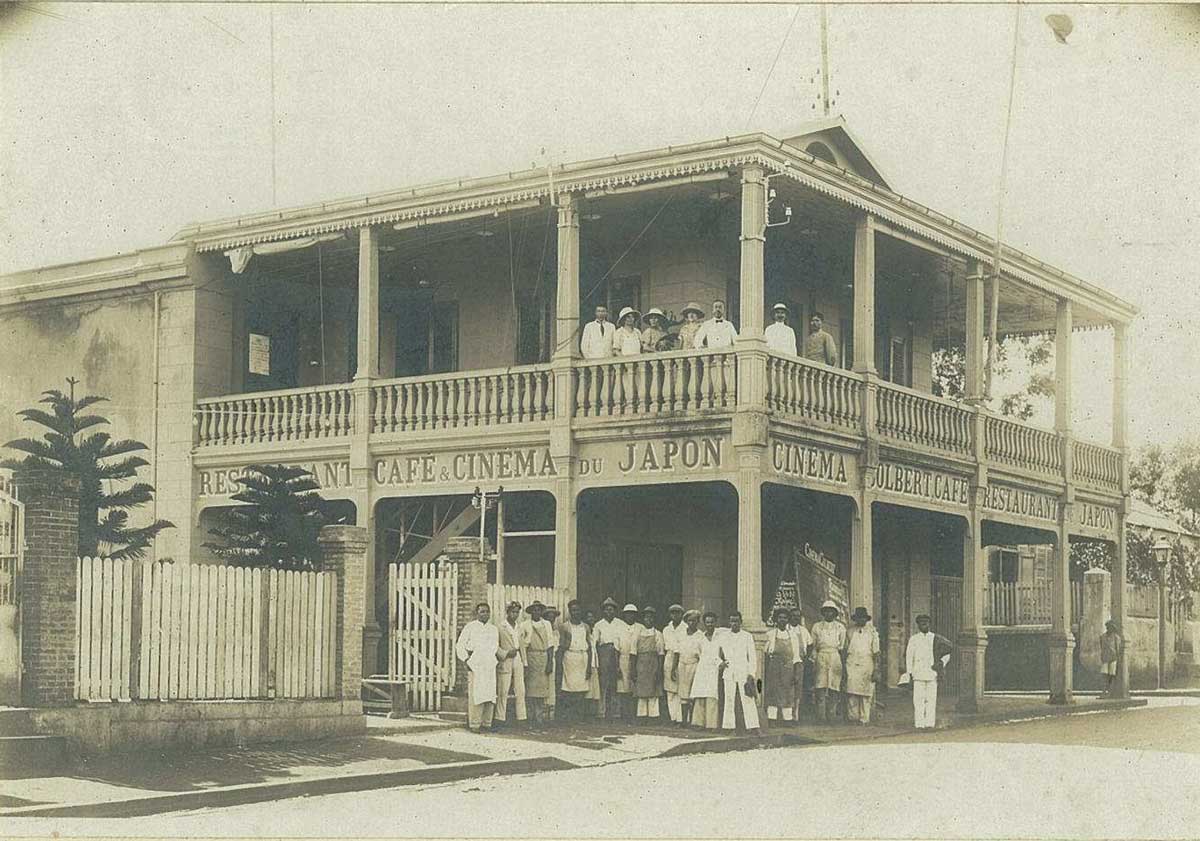
Denzaburō Akazaki, who did business in Madagascar from around 1904, is also well known. When the Russian Baltic fleet called at Madagascar during the Russo-Japanese War, he immediately telegraphed to the Japanese Consulate in Bombay, India, to inform them about the arrival of the fleet. Later, the Japanese Navy sent a letter of appreciation to him for that.
Japanese who traveled to Africa
https://www.ndl.go.jp/kaleido/e/entry/14/1.html
follow the ongoing Twitter feed here
https://twitter.com/jogany/status/1780670980362297629
Chapter I I have a Theory
_______________
Chapter II There has indeed been a paradigm shift
How did Ravelojaona, a young pastor, who had not undergone regular theological studies, manage to get his hands on a publication that, all things considered, was very informative for our time and would impact Malagasy nationalism? “If the Japanese can do it, why can’t the Malagasy?” (1) … And that is all I can share about the infamous series of articles “Japan and the Japanese” which initiated the Vy, Vato, Sakelika (2) and sealed the fate of an entire generation because I still need to visit the National Archives (3) to consult and interpret them in my own way before preparing a #yabufé with Mose Njo and undoubtedly launching our Secret Society Genyôsha style (4), and we will go sign the statutes before heading to the tax center. Was it from a bookseller who supplies pastors of the L.M.S? or as I strongly suspect, sold by its prospecting merchants very up-to-date on the needs of the literate in the colonies and capable of peddling anything that might disturb the minds for a little money.
I had to ask ChatGPT which books and events could have placed the Meiji era at the heart of the political concerns of the Malagasy elite at the beginning of the 20th century? In 1906 “Japan by the Japanese” (5) was edited by Alfred Stead, but it was especially the Anglo-Japanese Exhibition held at White Castle in 1910 (6), in continuity with this type of publication, that had the most impact on a world already fascinated by this country which had been closed for so long and suddenly and aggressively opened. But also spreading a bit too generously its merits and expansionist ambitions. By the happiest of chances or coincidences, the missionary conference was held in Edinburgh the same year in 1910 (7) and “advocated a rapid movement of the most mature Protestant churches towards autonomy, with an indigenized hierarchy.” It took a long time to apply, and claims by the Tranozozoro movement cemented the decisions in 1929 in Madagascar (8 ).
In Edinburgh, Rainanandriamampandry’s son, Rajaonah, presented his first thesis in Medicine around 1880 and was then required to present a second thesis in Paris to have his skills recognized (9). Even if the status of Native under the French colony of Madagascar was more disadvantageous than those imposed by the revised Fanompoana (10) by Gallieni, students of the A.M.I (a rather pompous acronym for Indigenous Medical Assistance) lived frustrations fueled by a daily life increasingly exacerbated by social injustices (11). It was a grim reality known to the Malagasy in 1913, ten years after the last Menalamba (12) had surrendered his weapon in 1903 in the Southeast, on the eve of World War I, a deep anger simmered from the benches of Tranovato to the benches of village schools. The violence with which the repression had crushed the young elite members of the V.V.S. I think was only matched by the extent of their ambitions. We see Pastor Ravelojaona who had to join the Front and by an irony of fate was allowed to meet compatriots he would not have had the means to reach because indeed the movement had been limited to the Merina. (13)
If I genuinely felt that something was triggered after these dramatic convictions especially for those sent to the Front of the Great War, I realized that the Japanese Slow Power had a remarkable echo among our elites but also those of the African continent. Just to remind us, Akazaki left his native Kumamoto to make his fortune in Madagascar before the end of the Meiji era at the death of Emperor Mutsuhito in 1912(14). A few years later, in 1921, from the same village another young man joined this time the Parisian fever of the interwar period. A true Tairiku Rônin (15) indeed, Komatsu Kiyoshi took advantage of his pan-Asian network to associate with, who else? Nguyễn Ái Quốc and his roommate Ralaimongo. He spent more than 15 years in Europe before discovering the Showa-era Japan, completely militarized. The translator of Malraux’s books including the magnificent “La Condition Humaine” (16) after 1933 never ceased to spread his humanist message in his country which would be deeply scarred after the 2nd World War.
VVS militant, Ravohangy (17) was exiled to Mayotte and was only forgiven in 1922 to join Diego-Suarez after finally completing his medical studies. Raseta (18), spared, opened his practice in Tuléar and joined efforts by collaborating with Ralaimongo’s newspaper l’Opinion (18). And the stories within History should reveal more about this era as one of the most charismatic profiles of the Malagasy political scene appears here, and whose trajectory non-accidentally crosses that of our heroes. Monja Jaona (19) worked in the North in 1928. Can we imagine he took advantage of his days off to go to Diego-Suarez the Café du Japon, a place limited to colonists? or in accordance with the Buddhist doctrine had Akazaki allowed natives to access his cinema? Either way, it’s in the plantations, overwhelmed by the suffering of his own who had left the family of the Androy like him, that he educates himself among the Protestants (well, there you go!) and launches the secret society Jiny in 1943 in Manakara (20). I particularly appreciate this post from Toliara tsy miroro (21) which analyzes the photo portraits of this leader and mentions ‘his ability to oppose’ visible in his smile full of conviction. As you may have suspected, we are going to delve a bit deeper in another thread about the struggles that led to the 1947 uprising, now that we are starting to better understand the mood of the times
The influence of the Meiji era did not cease to revolutionize at its own pace when I discover that Imperial Ethiopia decided to model its Constitution on Meiji principles in 1934 (22) . But the stories within History do not stop there because in those years we learn that there might have been the wedding of the century (before that of Lady Di) of a young Ethiopian prince with a young woman from the Japanese Nobility (23). The fairy tale ends with Mussolini’s scheming who, I think, would proclaim his sovereigntist and racist speech but especially saw these Japanese affairs as a bit too mercantile with a bad eye. Sumioka [Kadooka] Tomoyoshi, a Tokyo lawyer, philo-Ethiopian nationalist, and a Pan-Asian activist, yet another Ronin indeed!, had organized the marriage and we remember the economically interested zoning carried out by Japanese prospectors and Ethiopia like Madagascar falls into Group B: nothing is ever left to chance (24). The Tairiku Ronin or “Shishi” (25) as they were also called and that, by the way, we have chosen to translate as Non-institutional Agents, built their approach on an independence facade.
While in 1936, we have Pastor Ravelojaina who dedicates himself to the writing of his Firaketana (26), Ralaimongo and Ravohangy have just been released from detention. That’s how much things were all over the place because we will talk about constancy for the Protestant (because undoubtedly protected by his congregation and his flock) and discontinuities for the Dissidents (who are perpetually short of funding for their publications, torn between socialism, freemasonry, and systematically distanced). I suspect that it was really at this time that there was a choice, a decision, an impulse that could have diverted the trajectory of the struggle for nationalisms. The expansionist Japan whose expansionist but fine trader Ronins had initiated a work of partnerships remodeled to the African reality with their experiences in Asia. Akazaki would have left Madagascar around that time and a bit like his compatriot Komatsu Kiyoshi found a transformed country. The rumbling of boots was heard and this great man who had known how to make the cultural scene of Diego-Suarez vibrate must surely have replayed the song composed in his honor (and that I try to find) during his sweet days in the hotel he opened in his hometown. (27)
Frankly, guys, I am not super satisfied by all this. I still do not understand the incongruity of having struggled so much and not having been able to benefit from the accumulation of knowledge and experiences when Independence was granted to us and even if the first time it was a bit weird at least to find the articles of Pastor Ravelojaona and update them to the taste of the youth of 1972 . The parallelism with Ethiopia continued since the Emperor visited Madagascar in 1965 (28) a few years after having visited Japan (29). Of course, the cards have been reshuffled, but let’s take a moment to contemplate the atmosphere of 1928 in Diego-Suarez, where Ralaimongo, Ravohangy, and Monja Jaona would have a drink at the Café du Japon, run by a pure product of the Meiji era who came to make his fortune in Madagascar.
to be continued
_______
sources links
(1) https://dacb.org/fr/stories/madagascar/ravelojaona/
(2) https://en.wikipedia.org/wiki/Vy_Vato_Sakelika
(3) https://www.facebook.com/ArisivaMalagasy
(4) https://en.wikipedia.org/wiki/Gen’y%C5%8Dsha
(5) https://archive.org/details/japanbyjapaneses00stea/page/n9/mode/2up
Harold H. Rowdon, “Edinburgh 1910, Evangelicals and the Ecumenical Movement,” Vox Evangelica 5 (1967): 49-71. https://biblicalstudies.org.uk/pdf/vox/vol05/edinburgh-1910_rowdon.pdf
(6) https://en.wikipedia.org/wiki/Japan%E2%80%93British_Exhibition
https://archive.org/details/japancatalogue00japarich/page/n5/mode/2up
(7) https://www.jstor.org/stable/43171282?read-now=1&seq=12#page_scan_tab_contents
Harold H. Rowdon, “Edinburgh 1910, Evangelicals and the Ecumenical Movement,” Vox Evangelica 5 (1967): 49-71.
https://biblicalstudies.org.uk/pdf/vox/vol05/edinburgh-1910_rowdon.pdf
( 8) https://www.jstor.org/stable/24250033?read-now=1#page_scan_tab_contents
(9) https://www.tandfonline.com/doi/abs/10.1080/03057070.2022.2091354
(10) https://www.jstor.org/stable/182352
https://shs.hal.science/halshs-02079018/document
(11) https://www.jle.com/en/MedSanteTrop/2003/63.1/017-021%20L’assistance%20m%C3%A9dicale%20indig%C3%A8ne%20%C3%A0%20Madagascar%20(1898-1950)%20(Merlin).pdf
(12) https://en.wikipedia.org/wiki/Menalamba_rebellion
(13) https://www.cairn.info/revue-guerres-mondiales-et-conflits-contemporains-2014-3-page-27.htm#:~:text=Le%20pasteur%20Ravelojaona%2C%20promu%20adjudant,des%20gar%C3%A7ons%20de%20table%20%5B20%5D
(14) https://journals.openedition.org/moussons/7139
(15) https://hal.science/hal-04350999
(17) https://mg.wikipedia.org/wiki/Ravoahangy-Andrianavalona_Joseph
(18) https://sismo.inha.fr/s/fr/journal/259787
(19) https://fr.wikipedia.org/wiki/Monja_Jaona
https://www.cairn.info/paysans-intellectuels-et-populisme-a-madagascar–9782811103958-page-253.htm
(22) https://en.wikipedia.org/wiki/1931_Constitution_of_Ethiopia
(23) https://friendsofethiopia.blogspot.com/2006/01/marriage-alliance-union-of-two.html
(24) https://journals.ub.bw/index.php/pula/article/view/1688
(26) https://arsie.mg/en/metadata/boky-firaketana-ny-fiteny-sy-ny-zavatra-malagasy-a-637946
(27) https://www.ndl.go.jp/kaleido/e/entry/14/1.html
https://unesdoc.unesco.org/ark:/48223/pf0000064449
(29) https://www.ndl.go.jp/kaleido/e/entry/14/2.html



